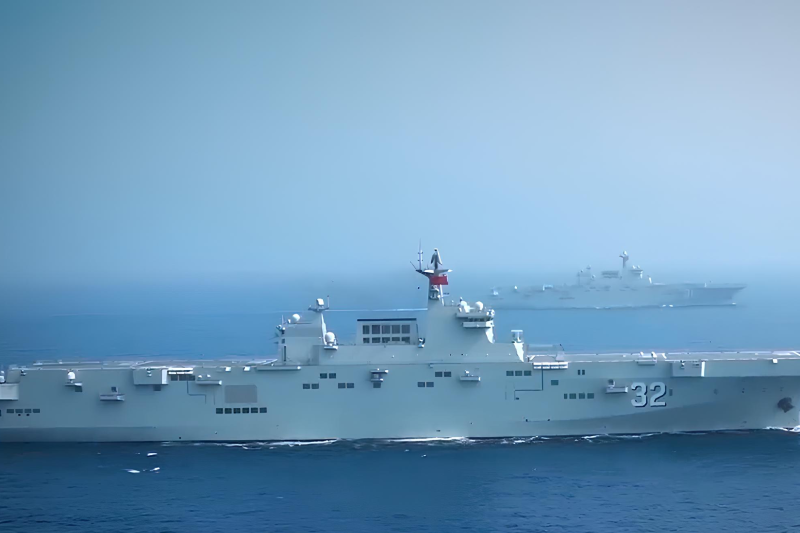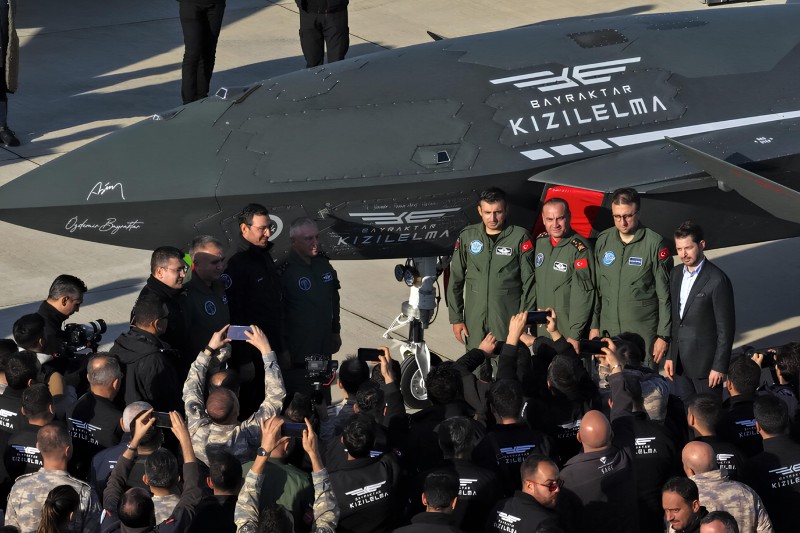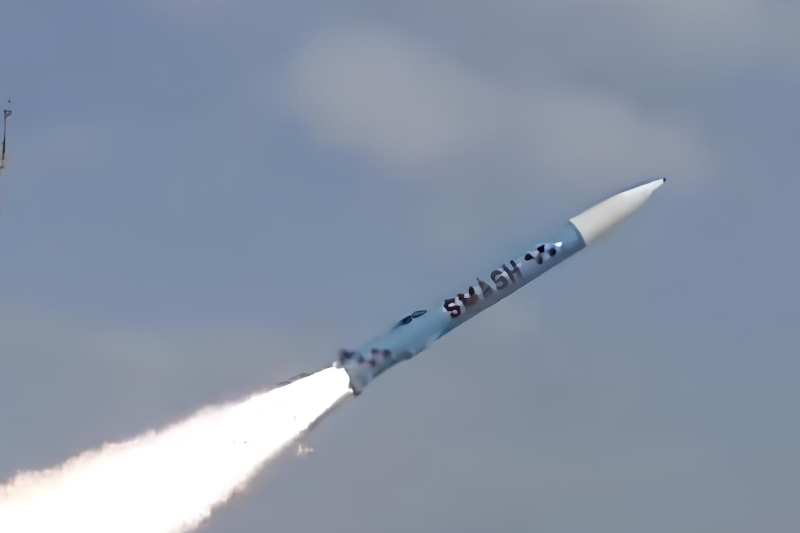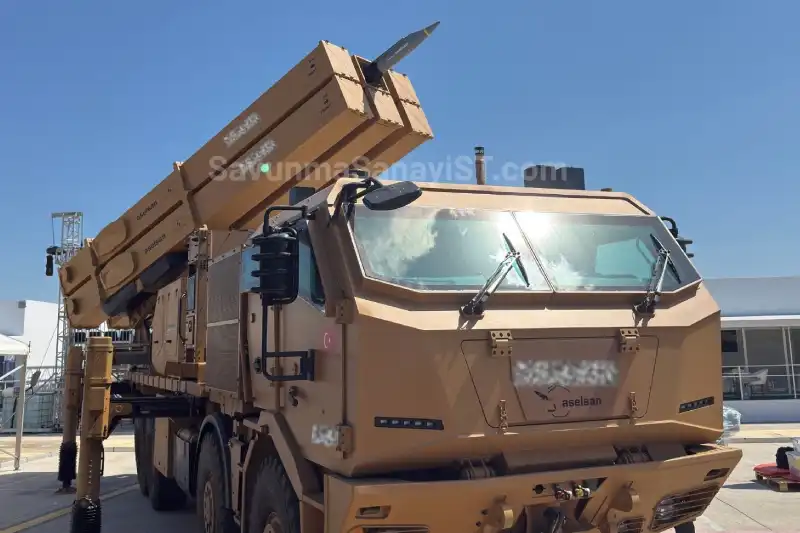Turkiye Develops Land-Launched Version Of Precision Glide Bomb
Turkish glide bomb to launch from land represents a groundbreaking advancement in precision strike capabilities, as ASELSAN unveiled its revolutionary Göktan missile system at IDEF 2025 in Istanbul. This innovative weapon combines the proven Tolun-S glide bomb with ground-based launch capabilities, creating a versatile precision strike platform that extends Turkey’s tactical reach significantly. The successful February testing of the Göktan missile marked a pivotal moment in Turkish defense technology, demonstrating the country’s growing expertise in developing sophisticated military systems that rival international counterparts.
Tolun Glide Bomb Foundation
The Tolun glide bomb series forms the technological foundation for Turkey’s ground-launched precision strike capability, representing a conceptual equivalent to the American GBU-39/B Small Diameter Bomb. Originally developed for air-launched applications, the 139-kilogram Tolun bomb demonstrates impressive 100-kilometer range when deployed from aircraft platforms.
The baseline Tolun variant incorporates advanced inertial and satellite navigation systems, achieving approximately 10-meter circular error probability under standard operational conditions. This precision level enables effective engagement of strategic targets while minimizing collateral damage risks in complex operational environments.
Multiple aircraft integration capabilities allow the Tolun to be carried by both unmanned and manned platforms using multi-station weapons pylons. This versatility enhances tactical flexibility while maximizing platform utilization across diverse mission profiles.
Advanced Tolun-IIR Capabilities
The Tolun-IIR variant represents significant technological advancement through integration of sophisticated tracking and homing systems with infrared detection capabilities. This enhancement reduces circular error probability to approximately one meter while enabling engagement of moving targets previously beyond standard glide bomb capabilities.
The infrared seeker head provides terminal guidance precision that dramatically improves effectiveness against time-sensitive targets and mobile platforms. This capability proves particularly valuable in dynamic battlefield environments where target movement complicates engagement planning.
Two-way data link integration allows real-time target modification during flight, providing tactical commanders with unprecedented flexibility to adapt to evolving battlefield conditions. This feature enables responsive engagement of priority targets as tactical situations develop.
Göktan Ground-Launch Integration
The Tolun-S variant specifically designed for Göktan missile integration incorporates solid-fuel rocket motor technology developed by DeltaV, extending operational range to 115 kilometers from ground-based platforms. This range extension significantly enhances tactical flexibility while maintaining precision strike capabilities.
ASELSAN’s integrated fire control system provides comprehensive launch management, target coordination, and mission planning capabilities essential for effective ground-based operations. The system manages multiple simultaneous engagements while coordinating with broader battlefield management networks.
Transport and launch container integration enables rapid deployment and simplified logistics support. Complete missiles remain sealed until launch, reducing maintenance requirements while ensuring consistent performance across extended storage periods.
Advanced Flight Characteristics
The Tolun-S demonstrates sophisticated flight path management capabilities, enabling multiple course corrections during flight toward designated coordinates. This maneuvering capability allows coordinated strikes from various approach angles during single engagement sequences.
Multi-directional approach capabilities significantly complicate enemy air defense planning and response coordination. Traditional air defense systems struggle to counter simultaneous attacks arriving from different vectors, enhancing overall mission success probability.
The flight path flexibility enables tactical deception operations where apparent target sets differ from actual engagement objectives, creating opportunities for coordinated strikes against high-value defended positions.
Powerful Warhead Technology
TÜBİTAK SAGE’s 105-kilogram warhead development provides substantial destructive capability against hardened targets and fortified positions. The warhead design specifically addresses penetration requirements for reinforced concrete structures typical of strategic installations.
Penetration testing demonstrates the Tolun’s ability to perforate one meter of reinforced concrete after 55-kilometer flight distances, indicating retained kinetic energy and structural integrity throughout extended engagements. This capability ensures effectiveness against underground facilities and hardened command centers.
The warhead’s blast characteristics optimize damage effects while maintaining precision engagement principles that minimize unintended consequences in complex operational environments.
Innovative Launcher Platform
ASELSAN’s proprietary launcher development represents independent advancement beyond existing Turkish rocket launcher systems, distinguishing the Göktan from established platforms like the T-122 Sakarya or TRG-300 Kasırga multiple rocket launchers manufactured by Roketsan.
The Anadolu Isuzu Seyit 8×8 off-road truck provides robust mobility and protection characteristics essential for frontline operations. This platform represents licensed production of Czech Tatra Force technology adapted for Turkish operational requirements.
The vehicle’s armored tilting cab provides STANAG 4569 Level 2 ballistic protection, ensuring crew survival in contested environments. The 700-horsepower Cummins diesel engine coupled with seven-speed Allison automatic transmission enables 90-kilometer-per-hour maximum speeds across diverse terrain conditions.
International Competition Context
The Göktan system represents Turkey’s strategic response to the US-Swedish Ground-Launched Small Diameter Bomb development, demonstrating independent capability development rather than reliance on foreign systems. This approach ensures technological sovereignty while creating export opportunities.
Boeing and Saab’s GLSDB system combines SDB glide bombs with M26 rocket motor technology, creating cost-effective solutions for M270 MLRS and M142 HIMARS platforms. The Turkish Göktan offers comparable capabilities while maintaining indigenous technology control.
Combat deployment experience from Ukraine operations provides valuable performance data for GLSDB systems, while Turkey’s Göktan awaits operational validation through domestic and potential export customer evaluations.
Also read this: ASELSAN Increases Defense Collaboration with South Africa
Export Success and Future Prospects
Azerbaijan’s acquisition of Tolun glide bombs for Bayraktar Akıncı unmanned aerial vehicles represents the system’s first international success, validating export potential while demonstrating operational effectiveness. This initial export contract establishes credibility for expanded international marketing efforts.
Recent Anka-3 unmanned aerial vehicle testing demonstrates continued platform integration development, expanding potential customer applications while validating system versatility across multiple delivery platforms.
The ground-launched Göktan variant opens new market segments where customers require precision strike capabilities without extensive aircraft integration requirements, potentially appealing to nations seeking cost-effective precision strike solutions.
Join us on Facebook, Twitter, YouTube, Instagram, and TikTok for real-time coverage of defense events worldwide.
Discover more from International Defence Analysis
Subscribe to get the latest posts sent to your email.












